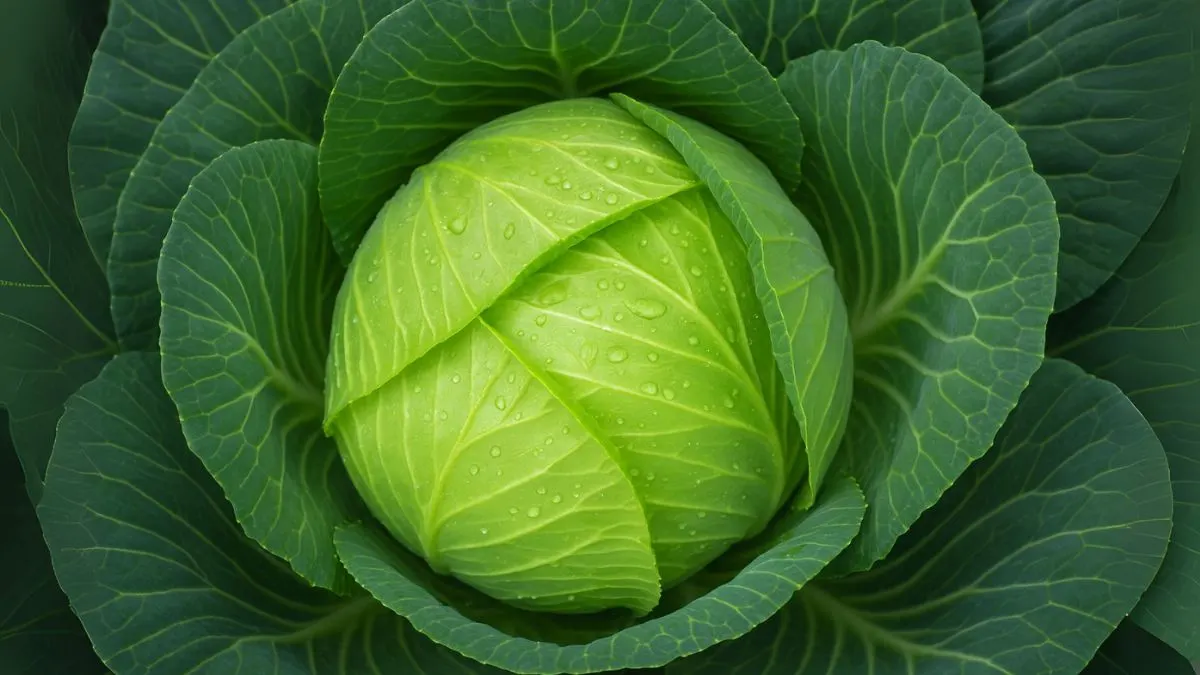Few vegetables are as versatile and rewarding as cabbage. Whether you prefer it fresh in salads, stir-fried with spices, or fermented into sauerkraut or kimchi, this leafy green is a staple across global cuisines. Beyond the kitchen, growing cabbage can have a positive impact on the environment because it improves soil cover, reduces erosion, and supports local food sustainability.
In this detailed guide, I’ll walk you through everything you need to know about cultivating cabbage—from soil preparation and planting to watering, fertilizing, and harvesting. I’ll also share my personal tips so you can enjoy thriving cabbages in your garden, no matter where you live.
Why Grow Cabbages at Home?

- Nutritious: Rich in vitamins C and K, along with antioxidants.
- Flexible: Can be grown in home gardens, raised beds, and even large containers.
- Eco-friendly: Growing cabbage can have a positive impact on the environment by reducing dependency on mass-produced vegetables.
- Long storage life: Harvested heads store well in cool, dry conditions.
- Rewarding: A single healthy plant can produce a large, tightly packed head.
When I first tried growing cabbages, I was struck by how quickly the seedlings established in cool weather. With proper care, I was able to harvest firm, crisp heads that tasted much fresher than store-bought ones.
Climate and Sunlight Needs
Cabbage is a cool-season crop. It thrives in cool weather, full sun, and fertile, well-drained soil enriched with organic matter.
- Best temperatures: 15°C–21°C (59°F–70°F).
- Sunlight: At least 6 hours of direct sun per day.
- Regions: Perfect for spring and autumn in Canada and the USA; in India, it grows best in winter.
Planting during hot summers often leads to poor head formation, so timing is crucial.
Also Read: Kevda Plant Benefits: From Headaches to Holy Rituals
Soil Preparation
Healthy soil is the backbone of successful cabbage cultivation.
- Soil type: Loose, loamy, well-drained.
- Enrichment: Mix compost or manure for fertility.
- pH: 6.0–6.8 (slightly acidic to neutral).
- Key tip: Cabbages need rich soil, plenty of water, and good fertilization for compact head formation.
Once, I mistakenly planted cabbage in sandy soil without adding compost. The plants grew leaves but failed to form proper heads. After amending the soil with organic matter, the results improved dramatically.
Sowing and Transplanting
Understanding the recommended sowing, transplanting and harvesting time is essential for a healthy crop.
- Start seeds indoors 6–8 weeks before the last frost in cool regions.
- Transplant seedlings outdoors once they are 3–4 inches tall and the soil is workable.
- Plant the seedlings about 40-60 cm apart to give them enough space to spread.
- For India, sow seeds in nursery beds during October–November and transplant seedlings 30–40 days later.
Watering and Fertilization
Cabbage is a thirsty crop.
- Maintain even moisture; inconsistent watering can cause heads to split.
- Water at the base, avoiding wetting the leaves to reduce disease.
- Fertilization: Regular feeding is essential because cabbages require rich soil, plenty of water, and good fertilization.
- Use balanced fertilizers (NPK) or organic alternatives like compost tea every 3–4 weeks.
Also Read: Build Strength Naturally With This Iron-Rich Powerhouse Vegetable
Maintenance Tips
- Mulch around plants to retain moisture and control weeds.
- Remove yellowing or damaged leaves to improve airflow.
- Protect from pests like cabbage worms, aphids, and slugs. Neem oil and row covers are effective solutions.
Growth Timeline
Stage |
Duration (Approx.) |
Seed germination |
7–10 days |
Transplant ready seedlings |
4–6 weeks |
Head formation begins |
45–60 days |
Harvestable cabbages |
80–120 days |
Common Challenges
- Pests: Cabbage worms and aphids are the most common. Regular inspection helps.
- Bolting: High temperatures can cause premature flowering. Always plant in cool weather.
- Head splitting: Caused by irregular watering or heavy rainfall. Mulching helps regulate soil moisture.
- Nutrient deficiency: Yellowing leaves may signal nitrogen shortage. Fertilize promptly.
Harvesting Cabbages
- Heads are ready when firm and compact.
- Cut at the base with a sharp knife, leaving some outer leaves to protect the head.
- Secondary heads may form on side shoots, offering an additional harvest.
- For storage, keep in a cool, dry place; cabbages last several weeks if stored properly.
I remember harvesting my first cabbage after nearly three months of care—it was heavy, crisp, and made an excellent addition to homemade coleslaw.
Also Read: Want Fruitful Apricot Trees? Master These 5 Tips First
Key Requirements for Growing Cabbages
Requirement |
Details |
Climate |
Cool weather, full sun, and fertile, well-drained soil enriched with organic matter |
Soil |
Loose, loamy, rich in organic matter |
Spacing |
Plant the seedlings about 40-60 cm apart |
Water & Fertilizer |
Rich soil, plenty of water, and good fertilization |
Planting Time |
Recommended sowing, transplanting and harvesting time varies by region |
Care |
Mulching, weeding, and pest control |
Personal Experience
When I grew cabbages for the first time in raised beds, I underestimated their spacing needs. My plants were too close, and the heads remained small. The next season, I followed the advice to plant the seedlings about 40-60 cm apart in rich soil, with plenty of water, and good fertilization. The difference was remarkable—the heads grew larger, firmer, and healthier.
Cabbage is a rewarding crop that thrives with proper care. With these steps, your garden will soon be full of crisp, green delights ready to enjoy in your favorite dishes.






